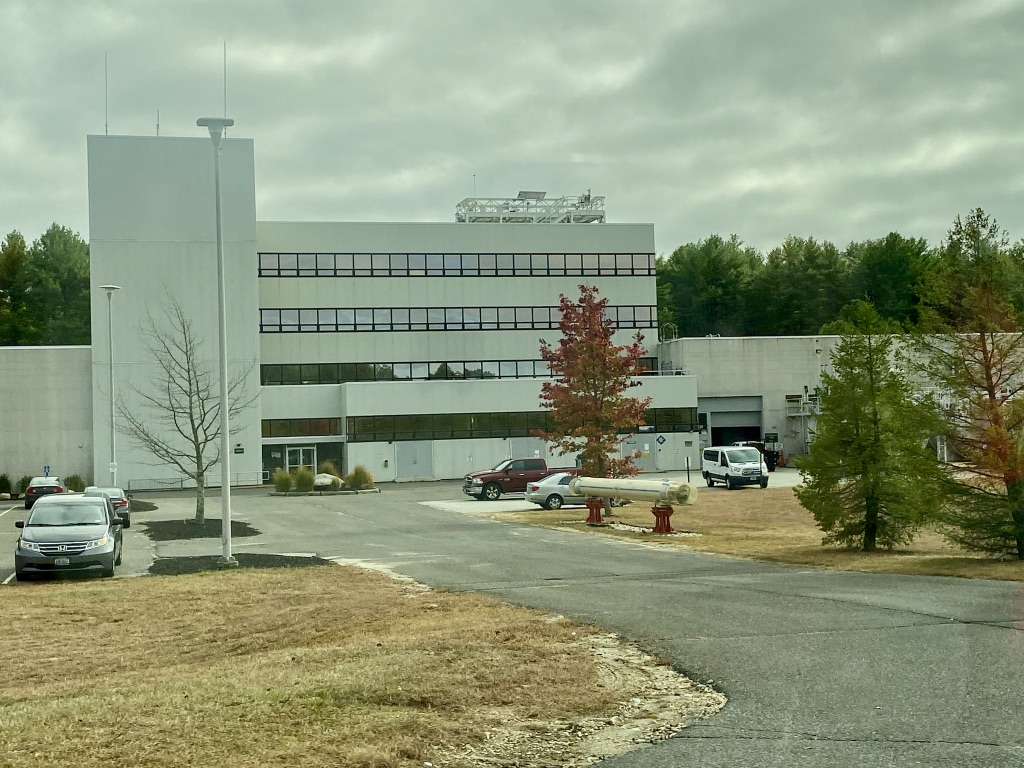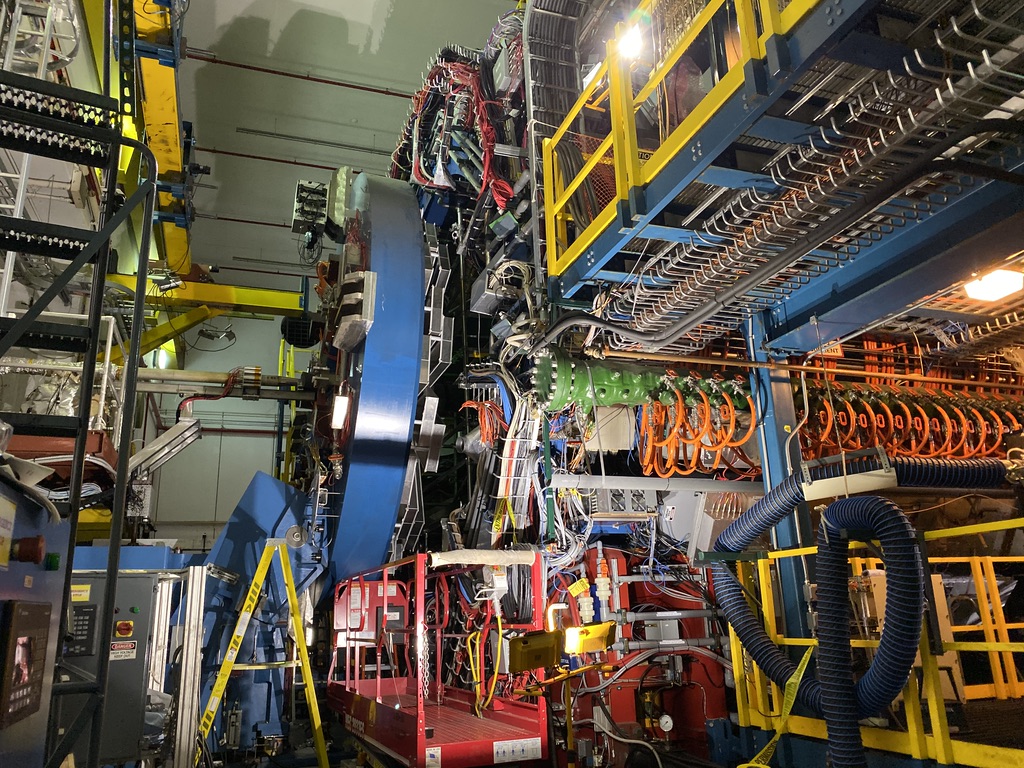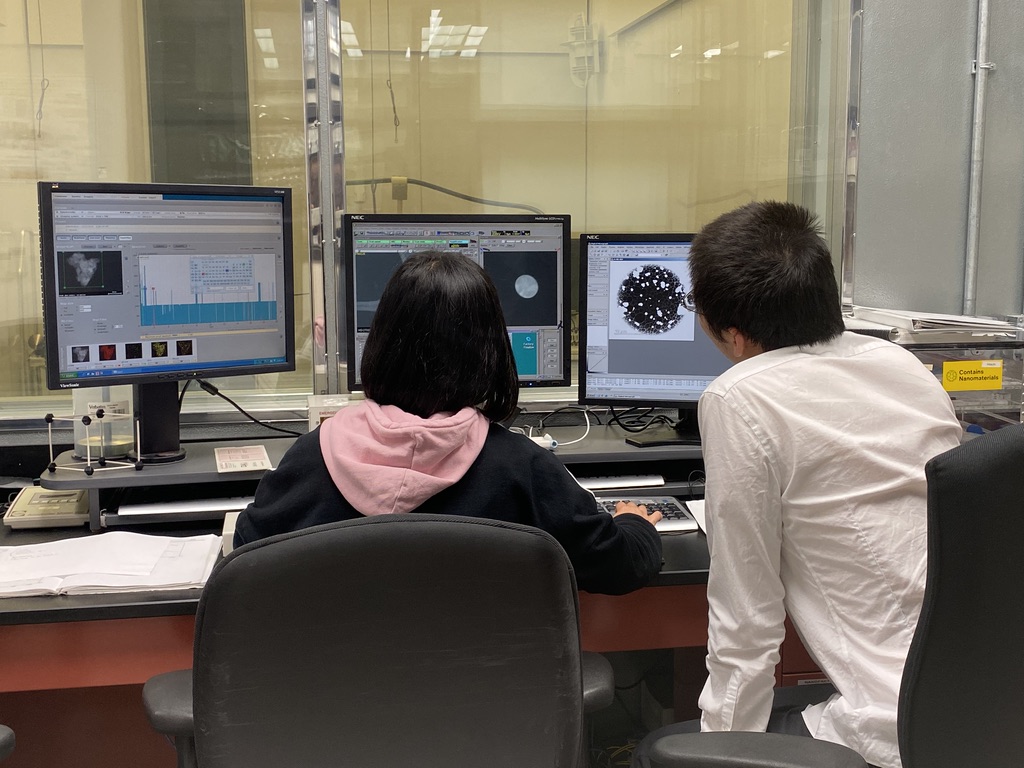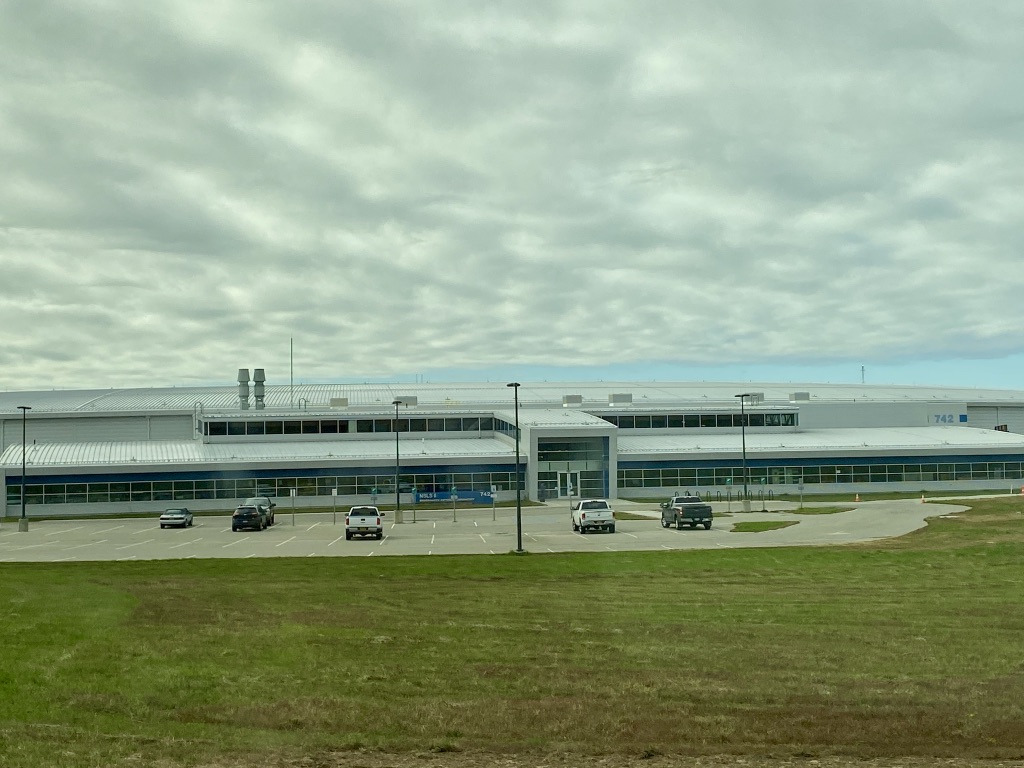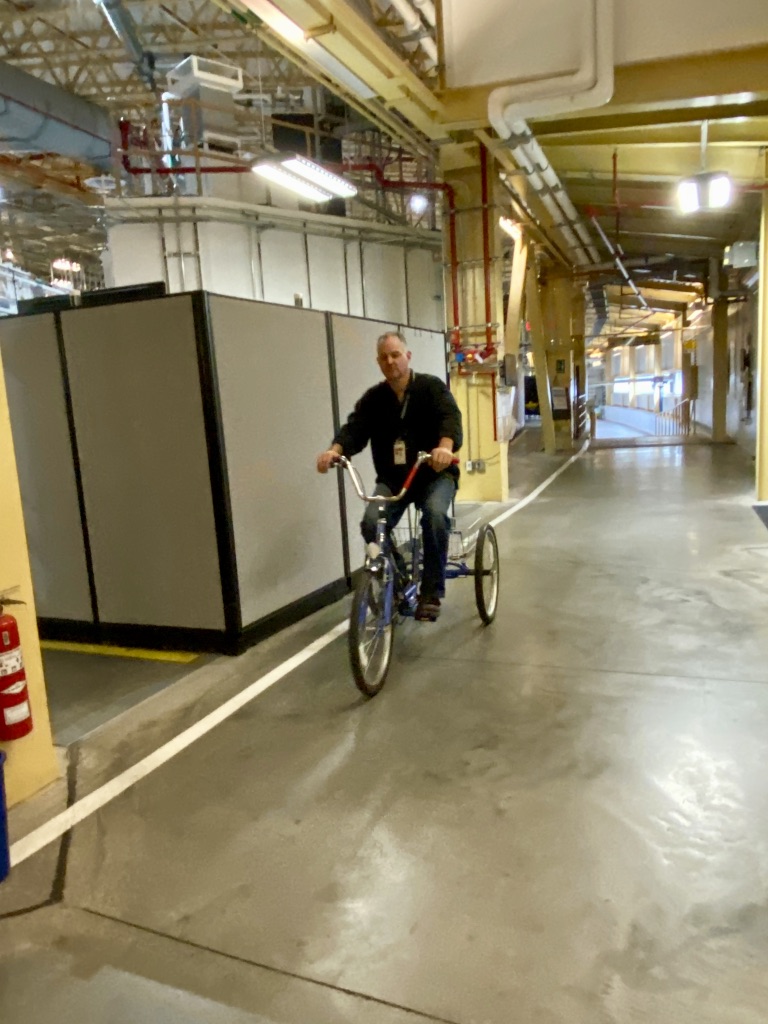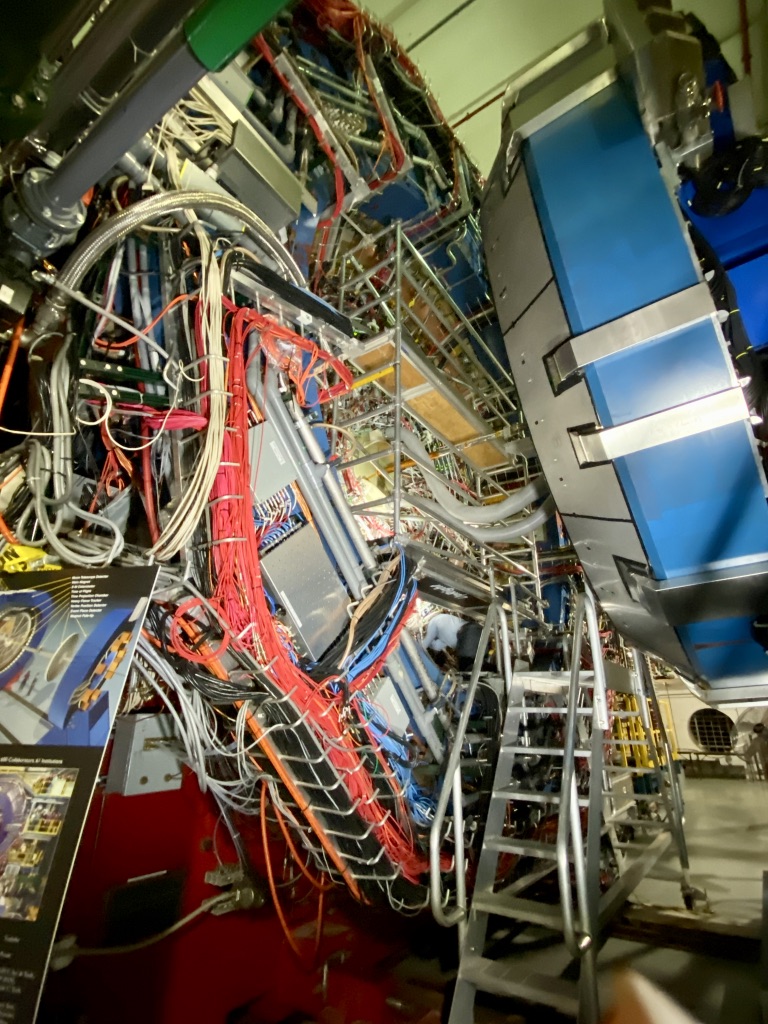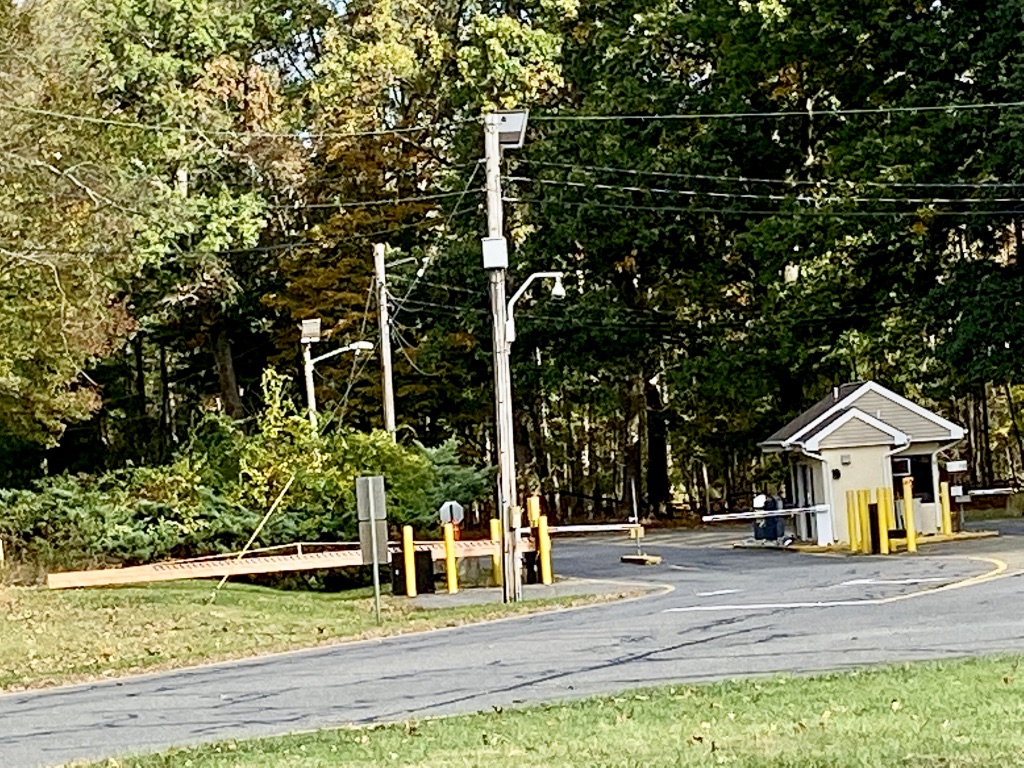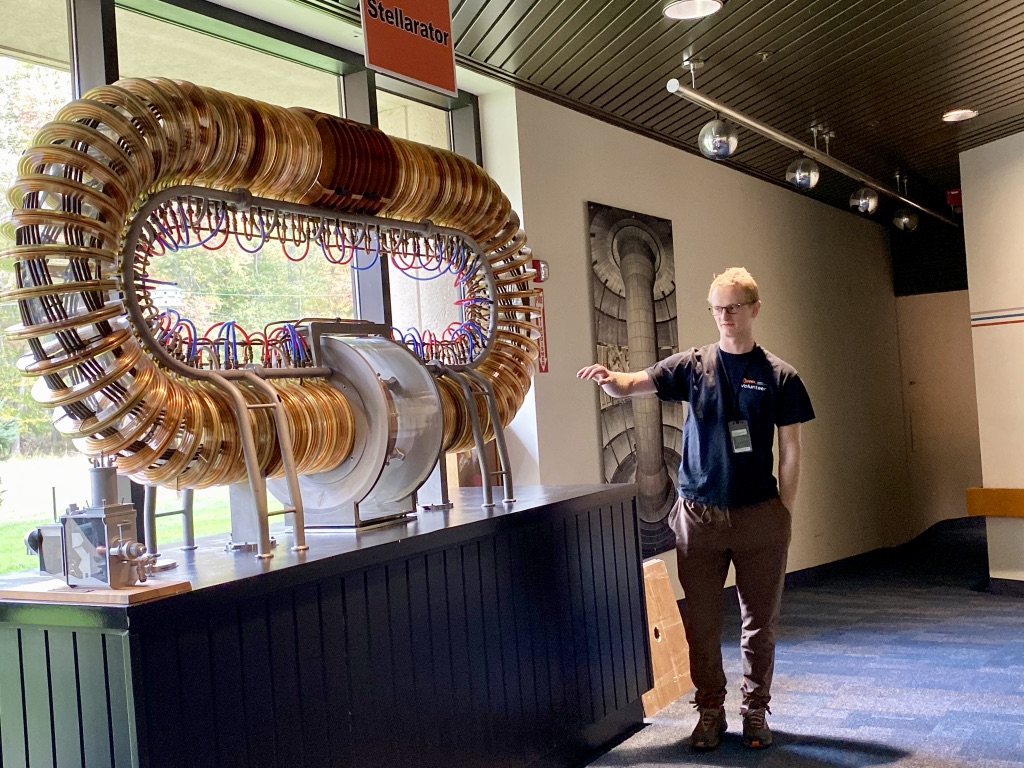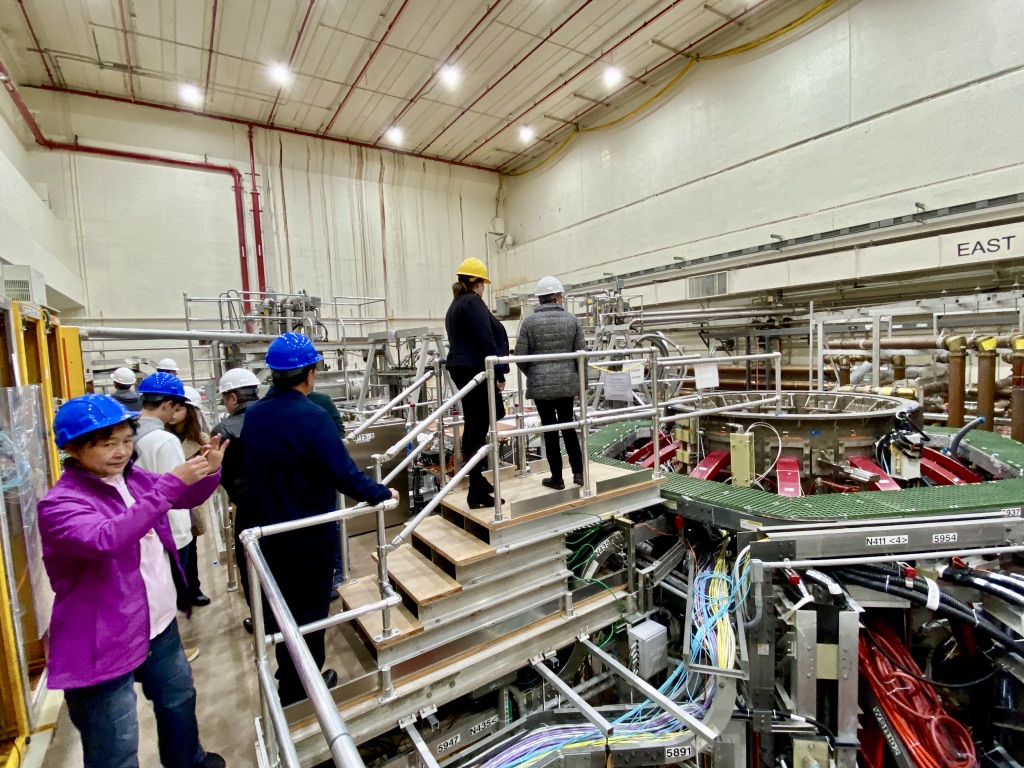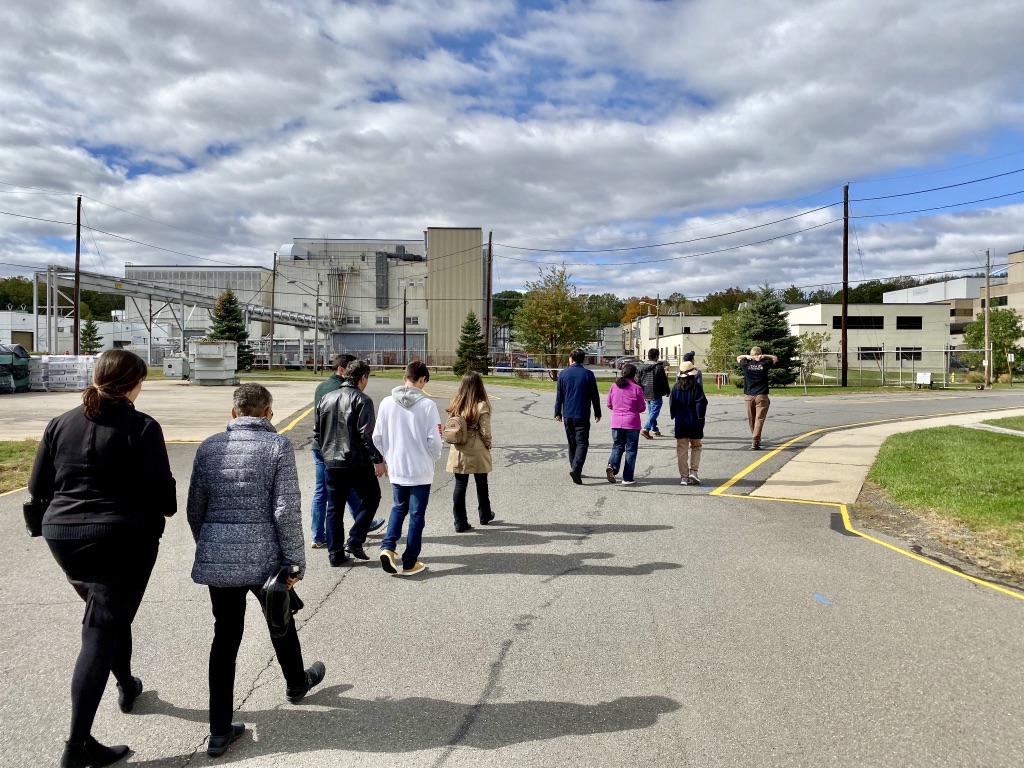On a secluded patch of land in central Long Island trees blocked any view of the buildings I knew were there. I paused my rental car at the guard station to receive a pass and drove cautiously as if something or someone was about to stop me. This is the campus of Brookhaven National Laboratory in Upton, New York, approximately 50 miles from Manhattan. Like many people I have an unsettled relationship with science. For me, it’s a what-could-have-been feeling mixed with you-made-your-choices. Decades ago, I wanted to be a scientist.
I’m exploring what access the public has to our national laboratory system. Magnificent in scale, these palaces of inquiry are more industrial than lush, but they elegantly balance mysteries with explanations. Unlike static Mt Rushmore, the Grand Canyon, or Statue of Liberty, our national labs are always a work in progress.
Before 1947 Brookhaven was a U.S. Army training camp. After the camp closed it grew into a national laboratory. Home to the first nuclear reactor in the United States. Home to the first reactor designed for medical research. And home to the soon to be Electron Ion Collider, which will explore how the proton got its spin and the still mysterious strong nuclear force that binds atomic nuclei together. The designated effort of the Department of Energy, Office of Science national labs is to solve human energy demands. That quest takes into account how the universe was formed, “seeing” matter’s building blocks, and learning from nature’s amazing ability to self-organize. I hope my enthusiasm will camouflage my Wikipedia-level knowledge of science.
The size of Brookhaven is deceptive. Its sprawling 5,280-acre campus is pocked with 300 buildings that catalog years of architectural history spanning from pre-industrial red brick low rise to LEED-certified modern steel frame.
The mammoth machines constructed here and the people who operate them hold the power to prove ideas right or wrong. They identify those with potential to change the future, or not. Either way, answers get found and new questions arise. So much begins here. This is the land of big science, basic science, experimental science, user science. The difference between ideas and experiments is as plain as that between a water faucet and white crested rapids. I grab my raft. I am thinking big, as in universe big, but the actual experience directs me to think small, as in atomic nuclei small.
I’m greeted by a manager in the Communications office and two staff members. I’m looking for a good reason to trust science, to come and see how science gets done, to be awed by science that benefits all humankind. We sat down at a large conference table where the manager click-started a Power Point presentation and handed me a site map. He’s been working at the lab for 27 years and still maintains excitement about his work. “No one really knows what it is like until they are here,” he said. I’m ready!
Our first stop is the Center for Functional Nanomaterials (CFN). At the CFN size matters. A nanometer is one billionth of a meter. A grain of salt or strand of hair is considered large in this microscopic world. I remember my first peek into a microscope was in a crowded fifth-grade Catholic school classroom with 55 students. When I asked my parents for a microscope, they thought it a ridiculous request for a girl.
Objects not only look different by scale, they behave differently. Think of the sounds coming from different sized pipes on a church organ. Or how light rays of different wavelengths emerge from a prism at different angles.
Scale helps scientists understand how nature self-organizes and opens the door to new energy efficient nanomaterials, as well as biological and industrial processes. Ash from forest fires and volcanic dust are naturally occurring nanomaterials.
Self-assembly is how evolution solves problems. In nature, if something is still here it knows how to exist. What are the structures that support that existence?
Through the eye of a moth
As an example, at the CFN observing the organic structure of a moth’s eye revealed an anti-reflective quality. This led Brookhaven scientists to create a nanotexture that increased solar cell efficiency. Like the eye of a moth, the solar cells harvest light rather than reflect it.
The glass walls, computers, and clean rooms in this building don’t suggest organic life to me. I can’t see what these scientists see. To me the shape of things are static. A leaf, a blade of grass can be held in my hand. I can draw a picture of it. However, depending on the scale, objects can be modified in different ways. At the macroscale, I can bend the blade of grass but the composition of it is static. At the nanoscale, I can’t bend the grass but its molecular structures can be modified. For example, scientists can apply coatings containing organic molecules to develop a flexible shell. They learned to direct the organization of objects the way nature does, creating structures with new properties.
The idea is not new. Ancient Islamic potters and medieval European artists employed nanomaterials by grinding silver, gold and copper metals into powders to add luster to pottery and color to glass. Such uses were confirmed through electron microscopy and precision spectroscopy using laser light sources. In ancient India therapeutic processing of minerals and metals continues today in their Ayurvedic system of medicine. However, the scale to which scientists can “see” and direct nanoparticles is new.
A research team from Columbia Engineering and Harvard University used tools at Brookhaven’s CFN to view, measure, and image cross sections of butterfly wings at a nanoscale. Once thought to be useless membranes, the wings of butterflies were revealed to have incredible temperature control and a sophisticated sensory network. Such knowledge brought them closer to developing new radiative-cooling materials. Maybe one day advanced flying machines!
Before we leave CFN, I looked into a glass cubicle where two young scientists were crouched in chairs with their eyes fixed on computer screens. A pink hoodie encircled the woman’s neck. I could not hear their voices. They were like tigers scenting prey, unaware of our presence.
Let There Be Ultra Bright Light
The concrete floor in the building that houses the National Synchrotron Light Source II (NSLS-II) is clean to a shine. It is so expansive that scientists ride adult-sized tricycles to get from one area to another. Octopus like cables extend from the stainless-steel machines that sparkle under the fluorescent lights dangling high overhead. The quiet in this grand space is unexpected.
Shining light on a metal knocks some of its free-flowing electrons out of the metal completely. The discovery of this law, called the photoelectric effect, landed Albert Einstein his one and only Nobel prize. At the NSLS II, electrons are extracted from materials such as metals then accelerated to circulate around the half-mile storage ring at a temperature hundreds of degrees below the freezing point of water. While racing around the ring, the electrons emit ultra-bright X-rays. However, emitting light causes the electrons to lose a bit of their stamina, so at a precise moment the electrons move through well-tuned superconducting cavities to gain their momentum back. Kind of like pushing a child on a swing. The NSLS-II shines its intense waves of light to “see” atoms that measure one-thousandth of a billionth of a meter. This kind of science led to advances in CT scan technology as well as discoveries in chemistry, matter physics, and biology.
Three of the beam lines here were used to characterize the atomic-level structure of viral components in COVID-19 and how they connect with receptors on human cells. Scientist from pharmaceutical companies, academia and Brookhaven lab collaborated in the search for antiviral agents and targets for vaccines.
From the sub, subzero cold environment inside the NSLS II we moved to the STAR (Solenoid Tracker) detector on the Relativistic Heavy Ion Collider (RHIC). A temperature that is 250,000 times hotter than the center of the sun is generated. Such contrasts intrigue me. I remember going from being popular to being ostracized the day my seventh-grade teacher announced I had received the highest grade on a science test. Higher than the boy brainiacs? It was a fluke I told my fleeing friends who were more interested in go-go boots than how temperature impacts atoms.
STAR tracker
When we reached RHIC, the largest circular particle accelerator in the U.S., I’m introduced to a nuclear physicist who is flanked by coils, cables and pipes that make up STAR, a heavy ion detector stationed on RHIC’s 2.4-mile ring. STAR is as big as a house and I am invited in.
When I see the few women of my generation leading important science projects and the following generation of women achieving their goals in science, I realize that my career detour was only in part due to cultural and familial influences. What really halted my pursuit of science was high school math. I was terrible in math.
I saw only a fraction of what they do at Brookhaven and certainly didn’t understand all of it. It’s like being in the foothills with only a view of the mountains. Yet, any scientist will say there is always more to learn no matter where you start. This thought diminishes my regret of not being science savvy. I, like others who visit our national science labs, always want to know more.
In just a few hours my view of the world changed. I drove slowly on the road that led me away from the lab. Sunlight twinkled between the tree branches in a most perfect way. The autumn spray of color surrounded me. I smelled the musty ground that waited for leaves to fall. I imagined all the extras science will bring and all that nature has yet to reveal.

